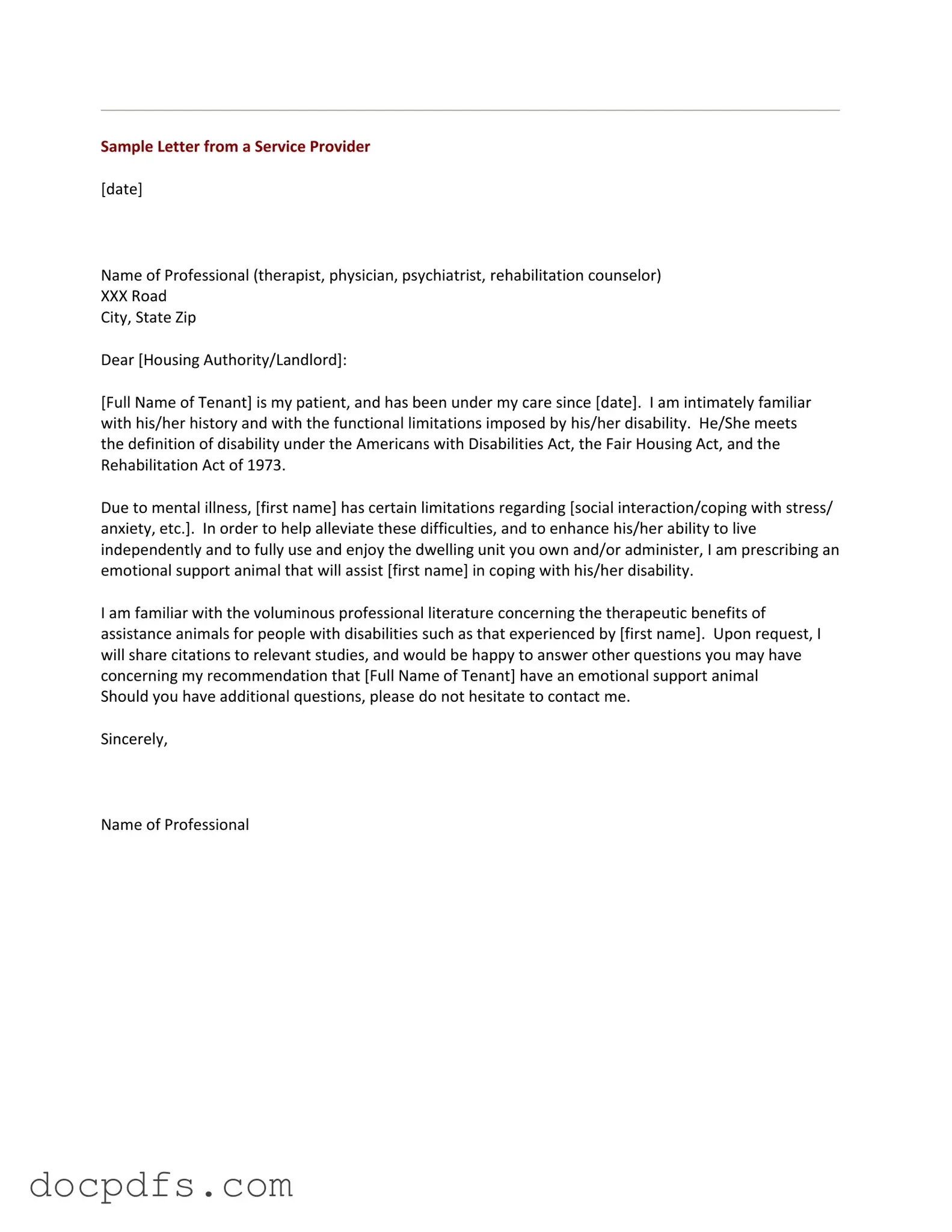What is an Emotional Support Animal (ESA) Letter?
An Emotional Support Animal Letter is a document from a licensed mental health professional. It states that you have a mental or emotional condition that benefits from having an emotional support animal. This letter helps you access housing and travel accommodations that allow you to have your ESA with you.
Who can write an ESA Letter?
Only licensed mental health professionals can write an ESA letter. This includes psychologists, psychiatrists, social workers, and licensed counselors. They must be familiar with your mental health history and able to determine if an emotional support animal is appropriate for you.
What should be included in the ESA Letter?
Your ESA letter should contain specific information to be valid. It must include:
-
Your name and the date of the letter.
-
The mental health professional's name, license number, and contact information.
-
A statement that you have a diagnosed mental or emotional condition.
-
A recommendation for an emotional support animal.
Additionally, the letter should be printed on the professional's letterhead.
Do I need an ESA Letter for my pet?
Yes, if you want your pet to be recognized as an emotional support animal, you need an ESA letter. This letter is crucial for accessing housing that allows ESAs and for traveling with your animal on airlines that accept emotional support animals.
How do I obtain an ESA Letter?
To obtain an ESA letter, follow these steps:
-
Consult a licensed mental health professional.
-
Discuss your mental health needs and how an ESA can help.
-
If appropriate, request the ESA letter during your appointment.
Make sure to keep a copy of the letter for your records and for any necessary applications.
Can I use an ESA Letter for any animal?
While you can have various types of animals as emotional support animals, your ESA letter does not specify a particular animal. However, it’s important to check with housing providers or airlines for their specific policies regarding which animals are allowed.
